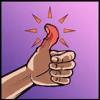An article in Fine Woodworking suggested using Halogen work lights with diffusion sheets as a means of getting pretty good light for woodworking photography without breaking the bank. LED work lights are now also available. They cost a bit more but don't get so hot. I am wondering if anyone has any comments on lighting for photography without getting a professional setup?
Thanks




 Reply With Quote
Reply With Quote







